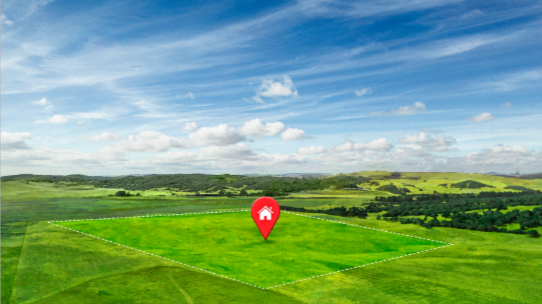
Professional drivers navigate a complex ecosystem of risks that extends far beyond what casual motorists encounter. The stakes are higher, the exposure is greater, and the consequences of poor decisions can ripple through entire business operations. Advanced defensive driving transcends basic safety protocols, evolving into a sophisticated skill set that combines tactical awareness, predictive thinking, and split-second decision-making abilities that separate true professionals from merely experienced drivers.
Cultivating Situational Mastery Through Environmental Reading
The road environment tells stories that most drivers never learn to read. Professional drivers develop an almost supernatural ability to interpret these environmental narratives, recognizing patterns in traffic flow, weather conditions, road surfaces, and human behavior that signal potential hazards long before they manifest into actual threats. This environmental literacy becomes the foundation upon which all other defensive driving skills are built.
Weather doesn’t just affect visibility and traction—it fundamentally alters human behavior patterns. Rain makes drivers more cautious initially, then paradoxically more aggressive as they adjust to conditions. Snow creates overconfidence in four-wheel-drive vehicles while making compact car drivers overly timid. Professional drivers learn to read these psychological shifts in traffic patterns, positioning themselves advantageously relative to predictable behavioral changes that occur during different weather conditions.
Road infrastructure provides constant intelligence about upcoming challenges. Bridge approaches often create wind tunnels that affect vehicle stability. Construction zones compress traffic into unpredictable patterns. Merge points become pressure cookers of driver frustration. Advanced defensive drivers develop mental maps of these environmental hot spots, adjusting their driving strategies before entering high-risk areas rather than reacting to problems after they’ve already developed.
The Art of Predictive Positioning
Traditional defensive driving teaches reactive strategies—what to do when problems occur. Professional-level defensive driving emphasizes predictive positioning—placing your vehicle in locations that minimize exposure to potential threats while maximizing your options for escape or evasion. This positioning philosophy treats the roadway as a three-dimensional chess board where every move creates or eliminates future possibilities.
Lane selection becomes a strategic decision rather than a convenience choice. The middle lane of a three-lane highway offers the most escape routes but also the highest exposure to merging traffic. The right lane provides fewer options but greater predictability. The left lane offers speed advantages but increased interaction with aggressive drivers. Professional drivers constantly evaluate these trade-offs, shifting lanes not just for immediate convenience but for strategic positioning relative to anticipated traffic patterns.
Following distance calculations extend beyond simple reaction time requirements to include strategic considerations. Maintaining appropriate space isn’t just about stopping distance—it’s about creating a buffer zone that allows for complex evasive maneuvers. Professional drivers vary their following distances based on traffic density, road conditions, and the predictability of surrounding vehicles, treating space as their most valuable safety resource.
Mastering the Mental Game of Risk Assessment
Professional driving demands constant risk assessment that goes far beyond identifying immediate hazards. It requires developing sophisticated mental models that can rapidly evaluate multiple variables simultaneously, weighing probabilities against consequences while maintaining the mental flexibility to adapt as situations evolve. This cognitive skill set represents the difference between drivers who simply avoid accidents and those who actively prevent dangerous situations from developing.
Risk assessment in professional driving involves pattern recognition at multiple levels. Individual vehicle behavior patterns signal driver impairment, distraction, or aggressive tendencies. Traffic flow patterns reveal systemic risks like merge conflicts or bottleneck situations. Environmental patterns indicate changing conditions that will affect overall traffic safety. Professional drivers learn to process these multiple information streams simultaneously, creating comprehensive situational awareness that enables proactive rather than reactive decision-making.
The mental discipline required for sustained risk assessment represents one of the most challenging aspects of professional driving. Maintaining high levels of alertness during routine driving requires conscious effort and systematic approaches to mental engagement. Professional drivers develop techniques for staying mentally sharp during long periods of uneventful driving, recognizing that complacency represents one of the greatest threats to their safety and effectiveness.
Vehicle Dynamics and Physical Mastery
Understanding vehicle dynamics at a professional level means recognizing how different driving conditions affect vehicle behavior and adjusting driving techniques accordingly. This knowledge extends beyond basic concepts like braking distance and turning radius to include subtle factors like weight distribution, suspension characteristics, and tire behavior under various conditions. Professional drivers learn to work with their vehicles’ physical characteristics rather than fighting against them.
Emergency maneuvers require muscle memory and practiced responses that can be executed without conscious thought. Professional drivers regularly practice controlled emergency stops, evasive steering, and recovery techniques in safe environments, building the physical skills necessary to handle crisis situations effectively. These practiced responses become automatic reactions that can be deployed instantly when needed, without the hesitation that characterizes untrained responses.
Vehicle maintenance awareness becomes a safety skill rather than just a mechanical concern. Professional drivers learn to recognize subtle changes in vehicle behavior that might indicate developing mechanical problems. They understand how different maintenance issues affect vehicle safety and performance, enabling them to make informed decisions about continuing to drive or seeking immediate service when problems develop.

Financial Protection and Professional Responsibility
Professional drivers operate in a complex landscape of financial and legal responsibilities that casual drivers never encounter. Understanding these responsibilities and protecting against associated risks requires comprehensive knowledge of coverage options and regulatory requirements. Affordable taxi insurance coverage represents just one component of the comprehensive risk management strategy that professional drivers must maintain throughout their careers.
The financial consequences of professional driving incidents extend far beyond personal liability to include business interruption, equipment replacement, and regulatory compliance costs. Professional drivers must understand how different types of coverage interact with their specific professional activities, ensuring that their protection strategies align with their actual risk exposures rather than generic coverage assumptions.
Professional reputation and career sustainability depend on maintaining clean driving records and demonstrating consistent commitment to safety excellence. This requires understanding how various incidents and violations can affect professional standing, even when they occur during personal driving time. Professional drivers learn to view every moment behind the wheel as a professional responsibility, maintaining high standards regardless of the specific context of their driving.
Technology Integration and Future-Proofing Skills
Modern professional driving increasingly involves integrating advanced driver assistance systems with traditional defensive driving techniques. Professional drivers must learn to work effectively with these technologies while maintaining the fundamental skills necessary to operate safely when technology fails or performs unpredictably. This integration requires understanding both the capabilities and limitations of various safety systems.
Navigation and communication technologies create new opportunities for efficiency while introducing new categories of distraction and risk. Professional drivers develop strategies for utilizing these technologies safely, incorporating them into their defensive driving practices rather than allowing them to compromise safety standards. This includes understanding when to engage with technology and when to prioritize undivided attention on driving tasks.
The evolution of vehicle technology continues to change the professional driving landscape, requiring ongoing adaptation and skill development. Professional drivers must remain current with technological developments while maintaining proficiency in fundamental driving skills that remain relevant regardless of technological advances. This balance between embracing innovation and preserving core competencies represents an ongoing challenge for professional drivers.
Conclusion
Advanced defensive driving for professionals represents a comprehensive skill set that extends far beyond basic safety awareness to encompass strategic thinking, risk management, and professional responsibility. The development of these skills requires ongoing commitment to learning and practice, recognizing that professional driving competency is not a destination but a continuous journey of improvement and adaptation.
The investment in advanced defensive driving skills pays dividends throughout a professional driver’s career, reducing accident risk, lowering insurance costs, and enhancing professional reputation. More importantly, these skills contribute to overall traffic safety, making roads safer for everyone while enabling professional drivers to fulfill their responsibilities with confidence and competence. The true measure of professional driving excellence lies not in the absence of challenges but in the ability to navigate complex driving environments safely and efficiently while maintaining the highest standards of professional conduct.





Leave a Reply